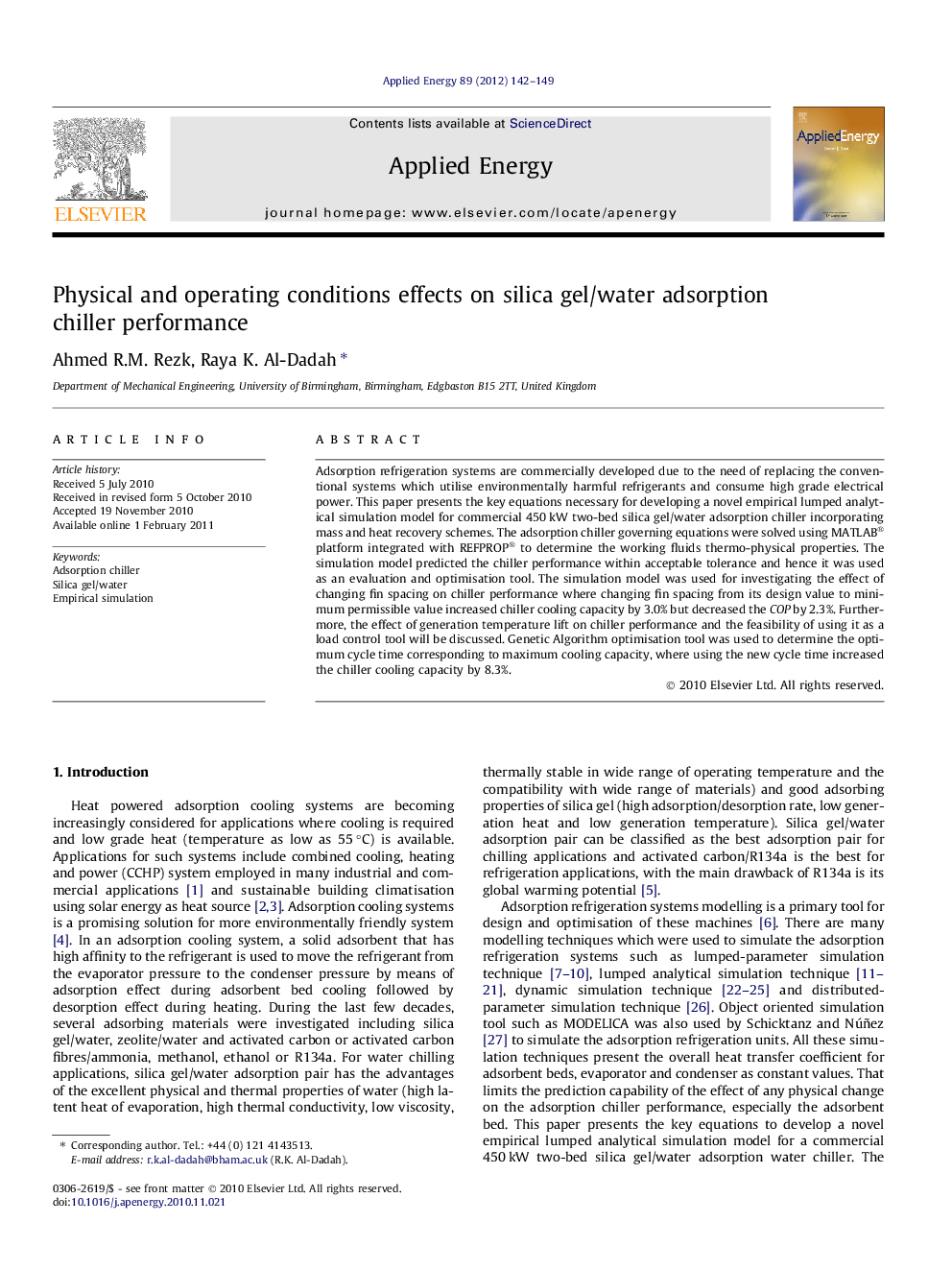| Article ID | Journal | Published Year | Pages | File Type |
|---|---|---|---|---|
| 10281922 | Applied Energy | 2012 | 8 Pages |
Abstract
Adsorption refrigeration systems are commercially developed due to the need of replacing the conventional systems which utilise environmentally harmful refrigerants and consume high grade electrical power. This paper presents the key equations necessary for developing a novel empirical lumped analytical simulation model for commercial 450Â kW two-bed silica gel/water adsorption chiller incorporating mass and heat recovery schemes. The adsorption chiller governing equations were solved using MATLAB® platform integrated with REFPROP® to determine the working fluids thermo-physical properties. The simulation model predicted the chiller performance within acceptable tolerance and hence it was used as an evaluation and optimisation tool. The simulation model was used for investigating the effect of changing fin spacing on chiller performance where changing fin spacing from its design value to minimum permissible value increased chiller cooling capacity by 3.0% but decreased the COP by 2.3%. Furthermore, the effect of generation temperature lift on chiller performance and the feasibility of using it as a load control tool will be discussed. Genetic Algorithm optimisation tool was used to determine the optimum cycle time corresponding to maximum cooling capacity, where using the new cycle time increased the chiller cooling capacity by 8.3%.
Keywords
Related Topics
Physical Sciences and Engineering
Energy
Energy Engineering and Power Technology
Authors
Ahmed R.M. Rezk, Raya K. Al-Dadah,
